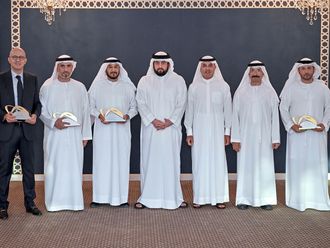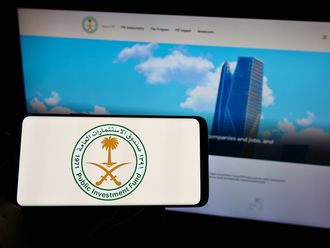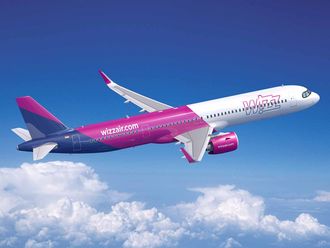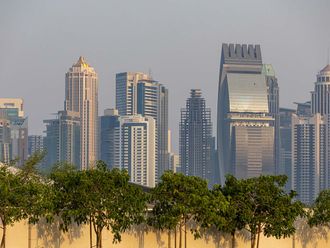Real estate still remains a viable investment alternative to stocks.
Property premiums on the secondary market at the current range of 30 to 40 per cent are an indication of a still-buoyant market although many speculators have been disappointed recently as the market softened a bit. While real estate is still attractive, officials urge investors to exercise caution when making the final decision on a purchase.
"The UAE's property market has changed. Dubai's real estate sector entered into a correction phase during late 2004 and early 2005," says Peter Riddoch, chief executive of Damac Properties, the largest private developer in Dubai's freehold market.
"Many speculators burnt their fingers and they lost money when the overheated market softened. This, in many ways, is a good thing for the market and will help it to attract the genuine end-users. "The market still yields good returns," says Riddoch.
Thousands of families have already moved into their freehold homes over the last three years, with Emaar Properties (the largest publicly listed developer in terms of market capitalisation) having handed over 12,800 housing units.
Nakheel, the largest UAE developer in terms of project value, also began handing over villas under the Jumeirah Lake Villas projects, but private developers such as Damac and others have yet to hand over the first keys due to construction-related delays.
"You may still command a 100 per cent premium, but on completed projects, though the general premium is much lower in the new properties," says Pouneh Goldooz, managing director of Casabella Property Broker.
"The one-bedroom apartments at the Greens that were sold for about Dh350 ,000 a few years ago by Emaar are worth more than Dh650,000 to Dh700,000. So on certain projects, investment and returns are still good. But premiums have come down drastically within a year and project owners are having a hard time selling some of their projects."
Goldooz feels that investments in villas remain attractive in the short term. "Villas are still going strong and will continue to go for some time as the market remains strong in the short term. So investments in villas are safe," she says.
Economic impact
The real estate sector's contribution to the UAE's GDP rose to Dh20 billion in 2003, up from Dh19.42 billion the previous year, according to government statistics.
The construction sector's contribution to the country's GDP rose to Dh17.66 billion in 2003, up from Dh16.97 billion the previous year.
Rental market
House rents, meanwhile, maintained nearly vertical growth in the past year as new supplies in the middle-income market did not come on the market fast enough. Rents in Dubai have shot up by 40 to 100 per cent, depending on location and segment, during the last 12 months, forcing low-income residents to send their families home in order to survive.
Properties with annual rental values between Dh40 ,000 and Dh60,000 will continue to appreciate strongly, between 40 and 80 per cent for at least another two years, analysts say, before rents in the luxury segment begin to level off.
"Until then, traditional demand and supply rules will dictate the market dynamics," says Goldooz.
" Dubai needs a large supply of affordable housing units to bring stability to the market, which remains to be regulated."
The UAE's market was dominated by government housing in the 1970s. The government invested in developing colonies to support the then boom in projects. Later, private sector developers brought in their flavours to the market which, till the 1980s, was in its infancy. However, demand took off again in the 1990s and again in this decade as more and more professionals and families moved in as a result of massive investment, the expanding economy and the arrival of new companies.
Elaine Jones, CEO of Asteco, the UAE's largest property management company, said, "The overheating rental market in Dubai is set to cool down as supply for both residential and commercial real estate begins to meet rocketing demand, and prices should return to acceptable levels over the medium term.
"We forecast 84,786 new supplies in 2006. This is part of the 285,786 new supplies coming online between now and 2008, based on the information we have."
Investors are not expected to put their money in the rental market unless they find it attractive enough to invest, analysts say. "Since 2002, when the government opened the real estate market to foreign freehold ownership, investment in real estate largely concentrated in the luxury freehold market at the cost of new supplies in the rental market," says an analyst.
"As a result, pressure began to build on the rental market. New supplies in Sharjah helped Dubai's rental market to remain stable for a while. However, even Sharjah is feeling the pinch now.
"Unless new supplies come in the rental market, or we see a decline in the rents in the luxury freehold market, the rental market will not stabilise and will continue to witness a similar growth for at least two more years."
Property matters
According to Dubai Municipality, 5,442 buildings are currently under construction in various areas of Dubai. "Out of this, 2,643 are in Deira, 2,654 in Bur Dubai and 145 in the rural areas," says a Dubai Municipality official.
In 2003, Dubai Municipality approved 17,131 buildings, up from the previous year's 13,894. In 2003, the civic body delivered 11,869 buildings to the contractors, up from 10,570 in 2002. In 2003, the number of completed buildings declined to 1,883 from the previous year's 2,259. These are excluding completed government housing projects of 463 in 2003, up from the previous year's 234.
According to Dubai Municipality statistics, the number of engineering material tests carried out rose to 197,841 in 2003, from 143,438 in 2002.
In 2003, Dubai witnessed 3,976 land transactions valued at Dh12.56 billion, up from Dh10.08 billion for 3,707 transactions in 2002.
In 2003, the real estate and construction contribution to Dubai's GDP was 8.98 per cent and 7.49 per cent, respectively
The number of buildings in Dubai rose from 36,043 in 1980 to 55,659 in 2000, while the number of housing units rose from 64,279 in 1980 to 145,363 in 2000.












